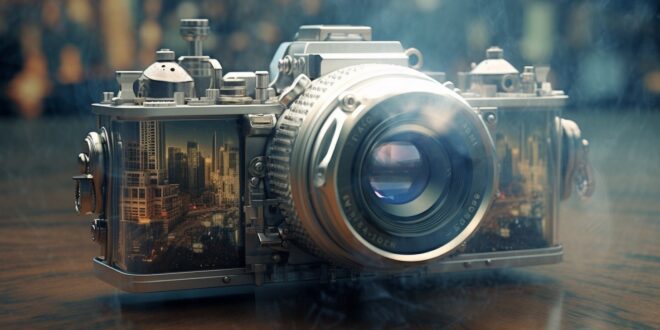The Science Behind Computational Photography: Understanding the Algorithms and Techniques
The science behind computational photography is an ever-evolving field that has significantly transformed the way we capture and process images. With the advent of smartphones and digital cameras, the traditional approach to photography has been revolutionized, paving the way for new algorithms and techniques that enhance image quality and provide a myriad of creative possibilities.
In this article, we delve into the fascinating world of computational photography, shedding light on the underlying algorithms and techniques that have redefined the art of image capturing.
Core Concepts of Computational Photography
At its core, computational photography refers to the use of advanced algorithms and processing techniques to improve or extend the capabilities of digital imaging systems. This involves capturing multiple images or data points and combining them to create a single, high-quality photograph. The process is made possible by the convergence of computer science, optics, and imaging technology, which has led to the development of innovative algorithms that can manipulate and enhance images in ways that were previously unimaginable.
High Dynamic Range (HDR) Imaging
One of the key techniques in computational photography is High Dynamic Range (HDR) imaging. In traditional photography, capturing scenes with a wide range of brightness levels can be challenging, as cameras are often unable to accurately reproduce both the darkest and brightest areas of a scene. HDR imaging addresses this issue by taking multiple photographs at different exposure levels and combining them into a single image that accurately represents the full range of brightness levels present in the scene. This is achieved through sophisticated algorithms that analyze and merge the different exposures, resulting in images with greater detail and more accurate color representation.
Image Stacking
Another groundbreaking technique in computational photography is image stacking, which involves capturing a series of images and combining them to reduce noise, increase resolution, or extend the depth of field. This technique is particularly useful in low-light conditions, where image noise can be a significant issue. By stacking multiple images, the noise can be averaged out, resulting in a cleaner, more detailed final image. Image stacking can also be used to create panoramic images by stitching together multiple photographs taken from different angles, allowing for a wider field of view than a single image could provide.
Depth Sensing Technology
One of the most exciting advancements in computational photography is the development of depth-sensing technology, which enables cameras to capture three-dimensional information about a scene. This is achieved through the use of multiple cameras or specialized sensors that can measure the distance between the camera and various points in the scene. By capturing depth information, computational photography algorithms can create images with a more realistic sense of depth and even enable features such as selective focus, where the background of an image can be blurred while keeping the subject in sharp focus.
Machine Learning and Artificial Intelligence (AI)
Machine learning and artificial intelligence (AI) have also played a significant role in the advancement of computational photography. By training AI algorithms on vast datasets of images, researchers have been able to develop systems that can automatically enhance images, remove unwanted artifacts, and even generate realistic images from scratch. These AI-powered algorithms have the potential to revolutionize the way we edit and process photographs, making it easier than ever to create stunning images with minimal effort.
Conclusion
In conclusion, the science behind computational photography has led to a new era of image capturing and processing, enabling photographers to overcome the limitations of traditional cameras and produce images of unprecedented quality and detail. As technology continues to advance, we can expect to see even more innovative algorithms and techniques emerge, further pushing the boundaries of what is possible in the world of photography.
 Mind Uncharted Explore. Discover. Learn.
Mind Uncharted Explore. Discover. Learn.




